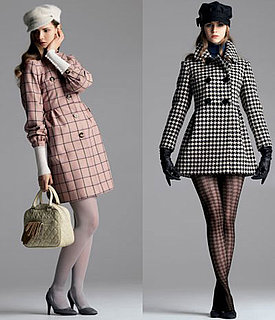Tricks for Smart Wedding Dress Shopping on a Budget
 Your wedding day is one you may have been thinking about since you were a young girl paging through your mother’s wedding album. And part of that dream – a big part for most women – is the gown you wear on your big day. Even if you weren’t the type to playact weddings with your brother’s friends, your pets and your dolls, you may still find yourself daydreaming about your dress once that ring has encircled your finger. And generally speaking, nowhere in that dream is the thought that you had to settle for a gown simply because you couldn’t afford to really splurge. So here are some tricks for smart wedding dress shopping on a budget – to get you into the gown that brings you to happy tears without causing your credit card to weep in protest.
Your wedding day is one you may have been thinking about since you were a young girl paging through your mother’s wedding album. And part of that dream – a big part for most women – is the gown you wear on your big day. Even if you weren’t the type to playact weddings with your brother’s friends, your pets and your dolls, you may still find yourself daydreaming about your dress once that ring has encircled your finger. And generally speaking, nowhere in that dream is the thought that you had to settle for a gown simply because you couldn’t afford to really splurge. So here are some tricks for smart wedding dress shopping on a budget – to get you into the gown that brings you to happy tears without causing your credit card to weep in protest.
It’s never too early to start looking!
In fact, the sooner you find the gown, the better. You may be hesitant to start ‘too early,’ especially if you’re trying to lose weight or get into a more trim shape for your wedding, but the truth is that you should have your gown long before you arrive at your goal weight. That’s what fittings and tucks are for, after all.
• Start shopping for your dress 8 to 10 months prior to your wedding date – earlier if you’d like.
• You have plenty of time, so don’t rush the process – that’s why you start so early.
• Fittings should usually start 6 to 8 weeks before the big day, so you should be at or close to your goal weight to reduce the fittings and adjustments required.
By starting so early, even if it takes you 2 months to find the perfect dress in your price range, you’re still not rushed into either paying too much for a dress you love, or settling on a dress that is ‘okay,’ but whose main selling point is that it fits within your budget.
That’s right, you need to budget your dress before you start looking.
Although no bride wants to be restricted by price in their search for the dress, you’ll need to be realistic. Everyone knows that the number one fight couples encounter, no matter how long they’ve been together, is money. Add to that the stress of the entire wedding, and those arguments can be exponentially more explosive. Set your budget prior to looking for dresses, so as to avoid being seduced into raising your budgeted limit higher than you can reasonably afford.
With a more restricted budget, consider these price-shaving ideas:
• Instead of going for a popular, avant-garde designer, see if you can find a lesser-known designer whose style you adore.
• Consider opting for a white, or ivory, bridesmaid’s dress or formal gown in place of a bridal gown – the price difference can be astounding, and with the infinite variety of BM gowns, your options are endless.
• If you absolutely must have a wedding dress, browse the ready to wear selection at your local shop or boutique. Ready to wear means you can simply have it altered to fit your body style, without needing to wait for the entire thing to be crafted – this saves time and money.
• Limit the embellishments like embroidery or beading; with the right style of dress, minimal embellishments can actually serve to avoid having the dress wear you.
Don’t forget: alterations and accessories are all part of the final cost.
When you’ve got your budget, you must remember that alterations and accessories such as the headpiece, shoes and jewelry are all going to add to the final cost of your wedding dress. You can stick within your budget by following a few simple truisms:
• Something old, something new, something borrowed, something blue: see if your mom or grandmother saved her veil or jewelry from her own wedding. You can fulfill ‘something old’ by wearing her heirloom pieces – and if you want to get in good with the in-laws, you can always ask your soon-to-be MIL if she wants to contribute one of these pieces for the ‘something borrowed.’ If all turns out well, your shoes could be your only expense, and fulfill the ‘something new,’ too.
• If your dress features embellishments, wear minimal jewelry – this will help you to avoid looking ‘overdone’ while simultaneously saving you money. You’ll look classy, rather than cheap. If you saved some extra money by avoiding too many embellishments you can utilize some of that reserve by finding simple costume jewelry that enhances, rather than detracts from, the elegant simplicity of your gown. If your dress is traditional or old-fashioned, you could even start scouring antique shops or yard sales looking for antiqued jewelry at a low cost.
• Alterations can be unforeseen expenses, especially if you gain or lose a lot of weight in the weeks preceding your event. Once the fittings start, you should try to maintain your weight – if you still haven’t reached your goal, give yourself a realistic new goal that will allow you to have your alterations finished in time.
And remember, last minute or rushed alterations will be pricier.
Saving money doesn’t mean you have to settle. By starting early, and setting realistic goals, you can have the dress of your dreams without breaking the bank.








